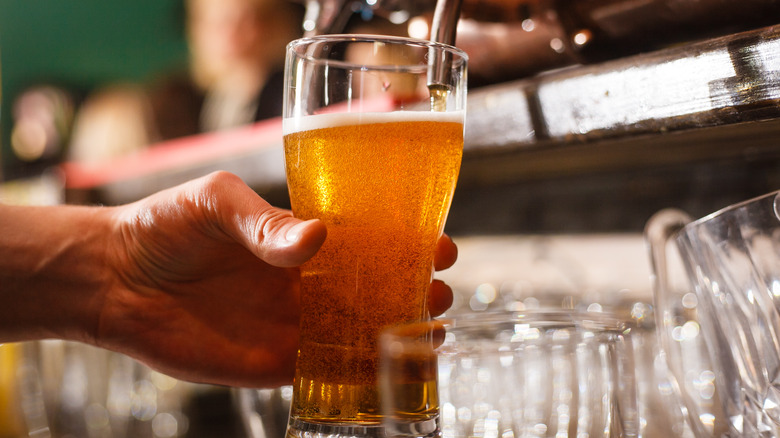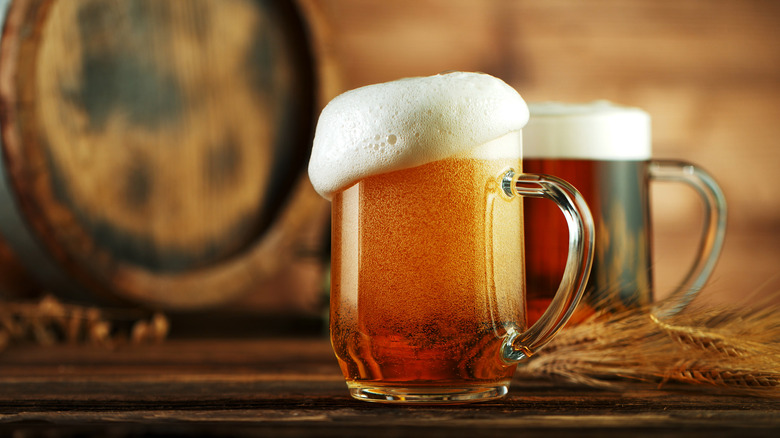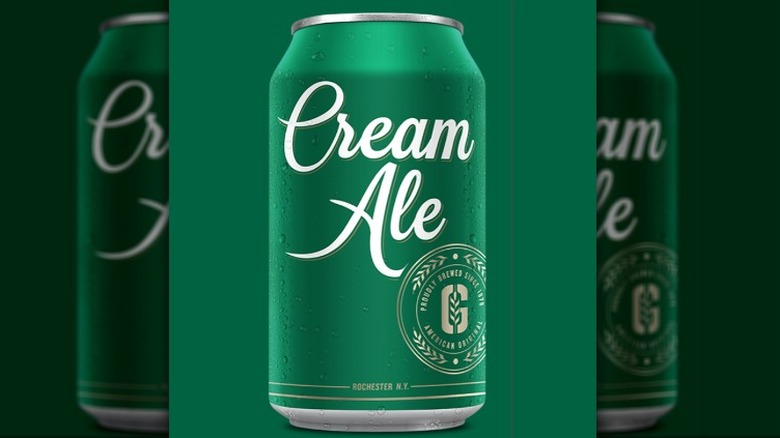Cream Ales Don't Have The Rich Texture You Might Expect
As one of the world's largest craft beer markets, it's no surprise the U.S. offers a rich selection of home-grown styles. Melding techniques brought by immigrants from Europe with distinctly stateside experimentation, these tasty brews will do more than quell the thirst. A uniquely American and under-appreciated style is the cream ale. This lager-like beer has a floral and slightly bitter palate, with more aroma and a little more booze than usual go-to beers. With the current lager trend, this style is poised to fill more taps.
Its creation is via a fascinating blend of brewing techniques. Like other ales, it's top-fermented in warm temperatures — unlike lagers, which are bottom-fermented in a cold environment. However, the cream ale can employ either ale or lager yeasts and is often cold conditioned like a lager. Unlike most ales, it forgoes barley, instead including corn, rice, wheat, or sugar for flavor. Such a technique creates a beer that straddles the aromatics of an ale and the crispness of a lager. And the cream part? No one knows the naming backstory, although some speculate it could be due to the beer's velvety texture or creamed corn-like aroma. Combining such factors creates quite a fascinating brew, all backed by a storied past. Let's dive into cream ale's history.
History of the cream ale
The cream ale is one of the few beer styles invented in the U.S. before the prohibition. A combination of English ale brewing methods and German lager techniques, it came about as an innovation to boost sales. In the mid-19th century, American ale creators were losing business to crisp-lager brewers, so they devised an ale with a lager-like mouthfeel. To lighten the body of the beer, they added corn instead of barley, forging a new style. The goal was to create an approachable, easy-drinking brew, and the cream ale certainly achieved that aim.
Established as a new American classic, the beer enjoyed success right until Prohibition. However, the 18th Amendment nearly killed the style, with classic lagers achieving widespread popularity once alcohol was legal again in the 1930s. A few interpretations did stick around — like Kruger's Cream Ale, which was the first canned beer in the U.S. Nowadays, cream ales are experiencing a rebirth in the U.S. craft beer market. With interpretations faithful to original recipes, as well as innovative variants with fruit, coffee, lactose, and other unique flavors, the style is more than worthy of tracking down.
Popular cream ales
For the most established version of the style, opt for the Genesee Cream Ale. Brewed since 1960, this beer is about as drinkable as they come, with a light body, tang of fruitiness, and substantial head. Pabst brewery (of Pabst Blue Ribbon fame) also makes a popular rendition called the Ballantine XXX, although don't expect this brew to win any awards. For an acclaimed version with corn, seek out Mother Earth's Cali Creamin, which has more maltiness, as well as hints of vanilla.
In the modern reinterpretation of the style, there's also the Imperial Cream Ale. Sometimes clocking in as high as 12% ABV, this interpretation of the style infuses more flavorings and has a thicker body. Coffee cream ales, specifically from New Jersey's Carton Brewing, are stellar examples of this style. With additions like Chiapas coffee or a cinnamon churro flavor, these ales have little in common with the original historic recipe but deliver a velvety, flavorful brew.


